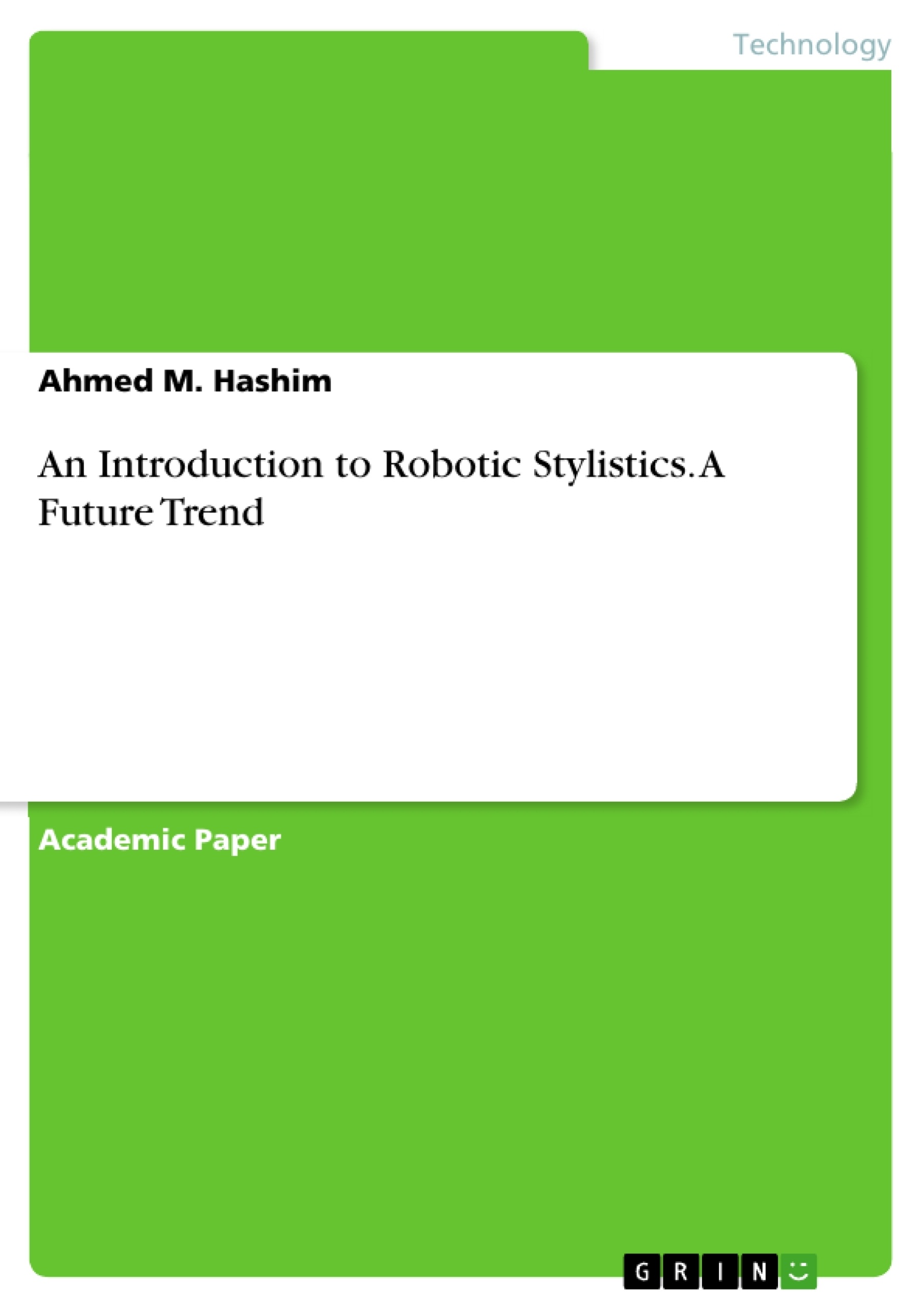This paper is about a new trend in Stylistics called “Robotic Stylistics” whose subject matter is the linguistic outcome of robots. It investigates the possibility of making the robotic linguistic outcome the subject matter of stylistics, since robots are able to choose what they want to say due to their algorithms that enable them to make a choice.
The field of artificial intelligence has developed and prospered in the recent years and entered the linguistic domain introducing a whole new sub-discipline of linguistics knows as Computational Linguistics. It helps linguists increase their knowledge of how the human brain works and how it processes language. Robotic stylistics will be concerned with the analysis and study of the style of robotic linguistic outcome using the same linguistic techniques that are used in the ordinary stylistic investigation of human literary and non-literary texts in order to discover the kind of style a robot has, how recurrent it is, and what it reveals about robots or artificial intelligence in general. However, there are many problems in this field especially in the case of obtaining the adequate data for analysis.
Inhaltsverzeichnis (Table of Contents)
- Introduction
- Robotic Stylistics
- Understanding and Concepts of Robotic Stylistics.
- Finding the data
- Conclusion
Zielsetzung und Themenschwerpunkte (Objectives and Key Themes)
This paper introduces a new trend in Stylistics called “Robotic Stylistics” which focuses on the linguistic outcomes of robots. The paper investigates the possibility of analyzing robotic linguistic outcomes using traditional stylistic methods. It explores the challenges and potential of applying stylistic analysis to robotic communication, particularly considering the growing capability of robots to make choices based on their algorithms.
- The emergence of Robotic Stylistics as a new sub-discipline of linguistics.
- The analysis of robotic linguistic output using established stylistic techniques.
- The challenges of acquiring suitable data for stylistic analysis in the realm of robotics.
- The potential of Robotic Stylistics to reveal insights about robot communication and artificial intelligence.
- The comparison between human and robotic communication in terms of competence, performance, and creativity.
Zusammenfassung der Kapitel (Chapter Summaries)
The introduction sets the context for the emergence of Robotic Stylistics, emphasizing the rapid advancements in artificial intelligence and computational linguistics. It highlights the potential of analyzing robotic language to understand the evolving capabilities of artificial intelligence.
The chapter on Robotic Stylistics defines and explores the concept, contrasting it with traditional stylistics which focuses on human communication. It examines the different types of artificial intelligence and how they relate to the study of robotic language. The chapter also explores the potential of robots to exhibit creativity and modify or create new languages.
The chapter on finding data for analysis tackles the significant challenges of acquiring suitable data for stylistic analysis of robotic communication. It discusses existing resources like the Human Robot Interaction Corpus and the potential for collecting data from various sources, including robotic speeches and novels.
Schlüsselwörter (Keywords)
The main keywords and focus topics of the text are Robotic Stylistics, Artificial Intelligence, Computational Linguistics, Style Analysis, Data Collection, Human Robot Interaction Corpus, and Linguistic Creativity.
- Quote paper
- Ahmed M. Hashim (Author), 2018, An Introduction to Robotic Stylistics. A Future Trend, Munich, GRIN Verlag, https://www.hausarbeiten.de/document/419427


